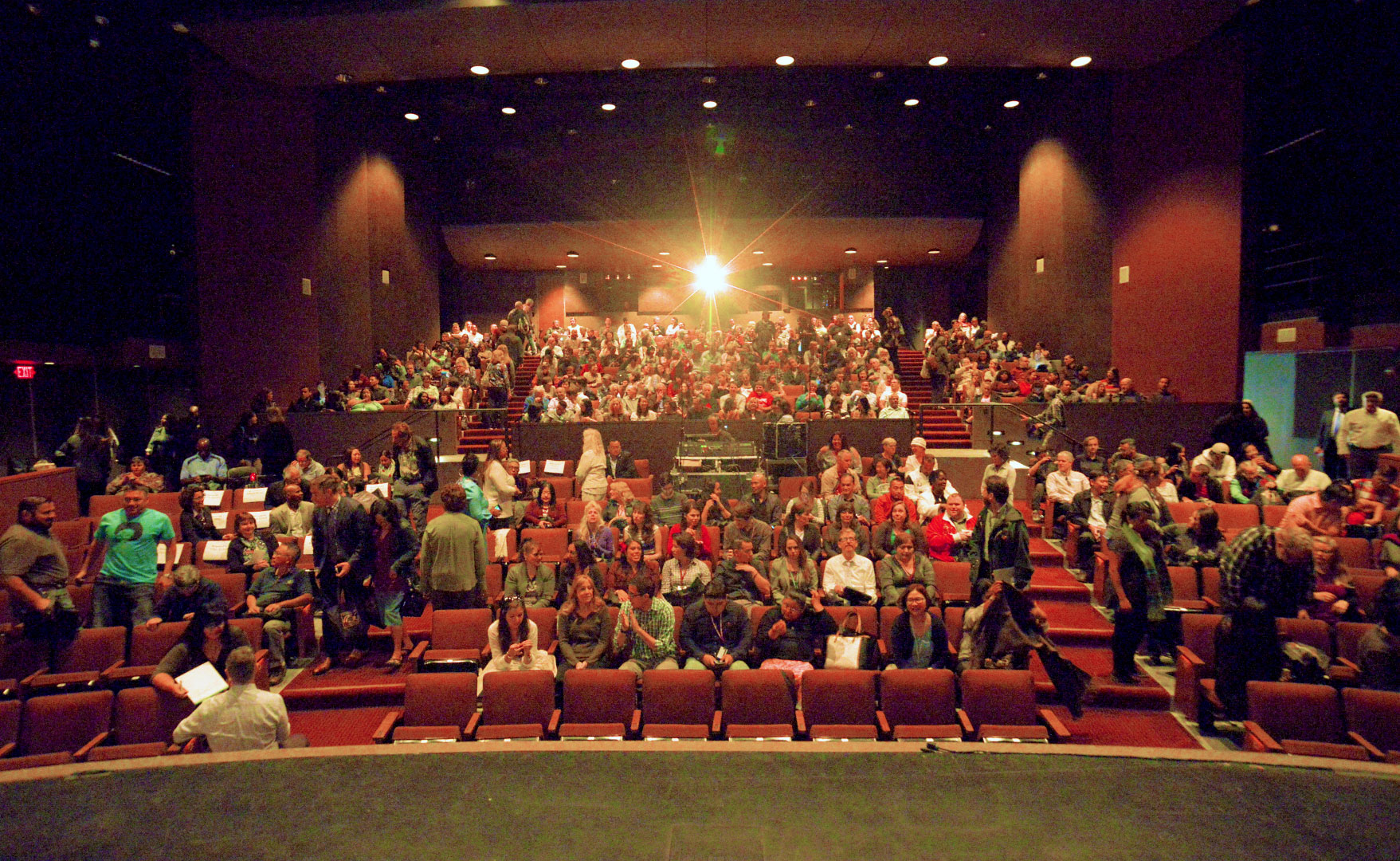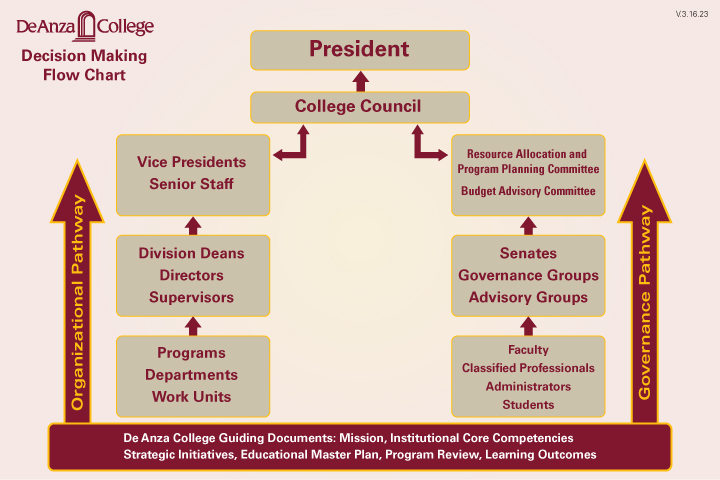The Basics
Governance is the ongoing and integrated process of planning and decision-making. Given that the active participation of all constituent groups and consideration of diverse viewpoints are essential for effective college planning, governance at De Anza College includes faculty members, classified professionals, students and administrators.
Any employee, student or community member may attend any governance committee meeting and is encouraged to participate as a committee member.

At the College Council retreat held on Oct. 21, 2022, a decision was made to move forward with implementation of a new committee structure proposed by the Shared Governance Review Task Force. The new Resource Allocation and Program Planning committee will consolidate work that was previously done by the Administrative, Instructional and Student Services planning and budget teams.

Advisory Groups
(Each group listed here is advisory to the office or body that follows in parentheses)
- Art on Campus Committee (Campus Facilities)
- Budget Advisory Committee (College Council)
- Campus Center Board
(Campus Center director) - Career Technical Education Advisory Committee
(CTE Division dean) - College Planning Committee (College Council)
- Committee on Online Learning (Academic Senate)
- Curriculum Committee (Academic Senate)
- Measure G Task Force (President)
- Technology Committee
(College Council)


Other Groups
Employee Groups
Meet-and-Confer Group
Foothill-De Anza District
De Anza College has two primary pathways for making decisions — organizational and governance. After receiving recommendations and advice from these pathways, the president makes the final decisions.
Upcoming Events
Governance Handbook
Please submit handbook changes to newellmallory@deanza.edu
Decision-Making Flow Chart

Organizational Pathway
Through the organizational pathway, programs, departments and work units are organized into divisions that comprise the three major houses of Instruction, Student Services, and Finance and College Operations. In general, areas of the programs are led by department heads, the divisions are led by deans or directors, and the three major houses of the college are led by the vice presidents.
The college and district guiding documents, including learning outcomes assessment cycles, Program Review, and the Six-Year Planning and Assessment Cycle, inform the organizational pathway. Recommendations and advice are given directly to the president through the senior staff.
Governance Pathway
In the governance pathway, all constituent members of the college community (students, faculty members, classified professionals and administrators) are represented by their respective organizations. These organizations designate members to participate on the new Resource Allocation and Program Planning committee – which consolidates the work previously done by the Administrative, Instructional and Student Services planning and budget teams – as well as on the Campus Facilities Committee and Equity Action Council.
The college and district guiding documents, including learning outcomes assessment cycles, Program Review, and the Six-Year Planning and Assessment Cycle, inform the governance pathway. The governance teams give recommendations and advice to College Council. Recommendations and advice are given directly to the president through College Council.



